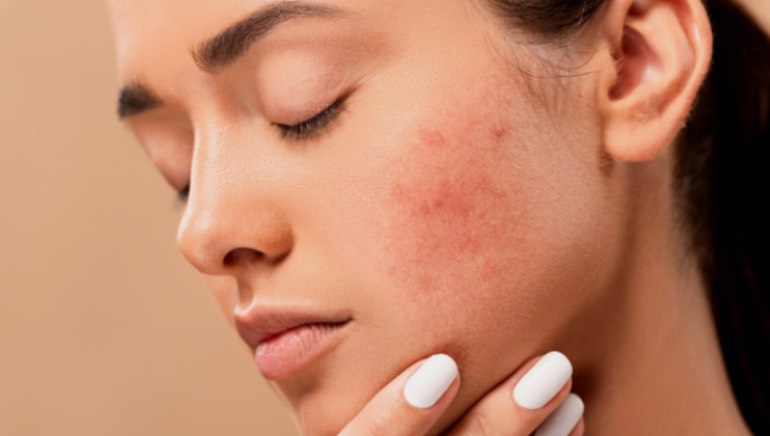
Understand how skin fatigue and seasonal changes affect skin health. Find out the symptoms, causes, and helpful remedies to bring back glow.
Have you ever looked in the mirror and felt disappointed by how your skin looks? Your skin, which used to be bright and healthy, may now appear dull and dry, showing signs of tiredness. This change, known as skin fatigue, goes beyond how you look; it shows that your skin is stressed from changing weather conditions. What does skin fatigue really mean? Try the following tips to help refresh and improve your skin, especially as the seasons change.
What is skin fatigue?
Our skin is a living organ that reacts to our environment and shows how we feel inside. Dr Pooja Chopra, Dermatologist at Aakash Healthcare, tells Health Shots that “changes in the seasons can upset our skin’s natural balance. Factors like temperature changes, humidity, and air quality play a crucial role in this disruption, leading to what we call weather-related skin fatigue.” When the seasons change, our skin has a hard time adjusting. The skin acts as a protective barrier, but it struggles when the air goes from humid in summer to dry in winter. This change makes it difficult for our skin to hold onto moisture and protect itself well.
What are 5 symptoms of skin fatigue?
You may be asking yourself if your skin is tired. Here are some common signs:
- Dull appearance: That rosy, glowing skin look you once had seems to have vanished.
- Dryness: Your skin may feel tight or rough, even if you’re applying moisturiser regularly.
- Enhanced sensitivity: You may experience increased sensitivity, leading to redness or irritation.
- Uneven skin tone: Skin might appear patchy or uneven, lacking its usual vibrancy.
- Poor recovery: Scrapes or blemishes may take longer to heal if your skin health is not good.
These symptoms happen mainly because the lipid layer is damaged. This layer helps keep moisture in and protects against irritants. Dr Pooja explains that “if your lipid layer is not functioning correctly, even your usual moisturiser might not be effective.”

Why does my skin get so dry when the seasons change?
When the seasons change, your skin needs to adjust quickly. Moving from the hot, humid air of summer to the cold, dry air of winter can be harsh on your skin.
- Summer struggles: Hot weather increases sweating and oil production, which can clog pores and cause acne. In summer, you might deal with extra oiliness and breakouts. In winter, it can feel completely different.
- Winter blues: Cold air makes pores smaller and slows down blood flow, which reduces oxygen to the skin. This can make skin look tired and dull. In dry air, moisture can quickly evaporate, leaving skin feeling dry.
Dr Pooja explains that “the mix of dry and humid air makes it hard for skin to know whether to keep or release moisture. This confusion weakens the skin barrier and can lead to skin fatigue.”
Does climate change affect your skin?
Climate change isn’t the only problem affecting our skin. Things like pollution and UV radiation also make skin look tired. These factors cause oxidative stress, which damages skin cells and makes us age faster.
Here’s how they affect your skin:
- Free radicals: Pollution and UV rays create free radicals that damage collagen and elastin. These two proteins are vital for keeping your skin flexible and youthful.
- Intrinsic and extrinsic stress: Skin fatigue can come from two primary sources: internal and external. Internal factors include stress and not drinking enough water. External factors involve the environment around you. Together, these issues can harm your skin’s health.
How does the season change affect your skin?
Changing seasons and outside stress can affect your skin, but you can reduce skin fatigue with a customised skincare routine. Here are some tips to help you:
- Regular exfoliation: Use gentle exfoliants to remove dead skin cells. This helps fresh skin cells come to the surface and can make your skin look better.
- Hydration is key: Moisturisers with hyaluronic acid help pull water into the skin. In summer, use lighter formulas, and in winter, go for richer creams.
- Antioxidant-infused serums: Use serums that are high in antioxidants, like Vitamin C or E, to reduce oxidative stress and help with healing.
- Gradual transition: As the seasons change, update your skincare routine just like you change your wardrobe. In summer, switch to thicker products as the air becomes drier.
- Listen to your skin: Watch how your skin changes with the seasons. It may need more moisture or extra sun protection depending on the weather and your activities.
Disclaimer: At Health Shots, we are committed to providing accurate, reliable, and authentic information to support your health and well-being. However, the content on this website is intended solely for informational purposes and should not be considered a substitute for professional medical advice, diagnosis, or treatment. Always consult a qualified healthcare provider for personalised advice regarding your specific medical condition or concerns.






